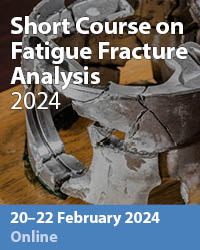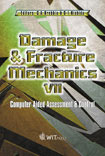A Discrete Crack Analysis For High Fiber Volume Fraction Cement-based Composites: Part 1, Constitutive Modeling
Price
Free (open access)
Transaction
Volume
37
Pages
Published
2002
Size
371 kb
Paper DOI
10.2495/DM020431
Copyright
WIT Press
Author(s)
M Boulfiza & N Banthia
Abstract
A micromechanics-based model that accounts for the effect of fibers on stress transfer in fiber reinforced cementitious composites (FRC) is presented in this paper. As has been shown in numerous past studies, improvement of the inherently low tensile stress and strain capacities of cementitious composites is achieved through the ability of fibers to transfer stress across a crack in the matrix. Using concepts of Non Linear Fracture Mechanics (NLFM), the fiber bridging effect is modeled in this study as a cohesive pressure, acting on the lips of the crack and depends on its opening. The theoretical determination of this stress-crack opening displacement \“constitutive law” provides a direct link between the behavior of the different components making up the material, such as fiber, matrix and fiber-matrix interface, and its resistance to fracture. This link which leads to a better understanding and quantification of the major mechanisms underlying the behavior exhibited by cement composites is expected to have a direct impact on the tailoring of cementitious composites for specific needs, such as designing high strength and/or high ductility materials. Introduction The aim of developing cementitious composites is to improve the inherently low tensile stress and strain capacities of cementitious composites [ 1,2,3]. This is achieved through the ability of fibers to transfer stress across a crack in the matrix. Using concepts of Non Linear Fracture Mechanics (NLFM), the fiber bridging effect is usually modeled as a cohesive pressure Oc, acting on the lips
Keywords





